Clancy Tucker's Blog, page 230
February 28, 2016
29 February 2016 - ALFRED NOBEL
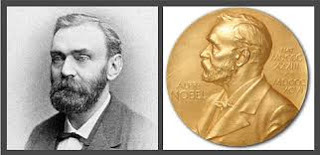
ALFRED NOBEL
G'day folks,
No doubt you have heard of the Nobel Prize, but do you know anything about the man behind the prize? Alfred Bernhard Nobel was a Swedish chemist, engineer, innovator, and armaments manufacturer. He was the inventor of dynamite. On the anniversary of Alfred Nobel's death, which coincides with the Nobel Peace Prize Award Ceremony, here's a look at some surprising facts about Nobel's life and legacy.
You may know that after a lifetime of working with explosives, Alfred Nobel wanted the fortune he'd earned to be used to create Nobel Prizes in the fields of chemistry, medicine, physics, literature and peace. However, there's much more to this 19th century scientist's story. Here are a few surprising facts about Nobel's life (and death):
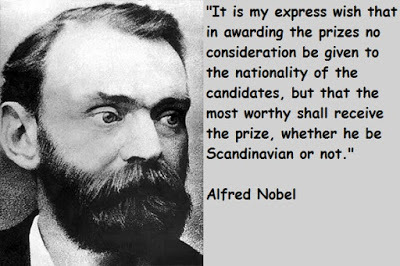
A Benevolent Misanthrope
For a man who would establish prizes that celebrate the best in human accomplishment, at times Alfred Nobel had very little enthusiasm for people.Nobel, who suffered from chronic bad health, lived a lonely life; he preferred not to entertain and once wrote that "numerous friends are to be found only among dogs." In addition, the people he met in his career often frustrated him, as competitors tried to appropriate his work on multiple occasions.
Yet Nobel didn't completely give up on humanity, as his prizes indicate. He once wrote: "I am a misanthrope, but exceedingly benevolent."

Nitroglycerin Man
Nobel's reputation and fortune were built on his work with nitroglycerin. He invented an igniter that made it possible to control the unstable compound's explosions, then figured out how to combine nitroglycerin with silicon-containing earth in order to create the more stable dynamite. Later in his career, Nobel also used nitroglycerin to make blasting gelatin and ballistite (smokeless powder).
In Nobel's lifetime, nitroglycerin was also found to have medicinal uses. And when Nobel experienced heart problems himself, doctors directed him to take the compound. Nobel recognized the absurdity of the situation, noting, "[I]t seems an irony of fate that they should be prescribing nitroglycerin internally for me!"
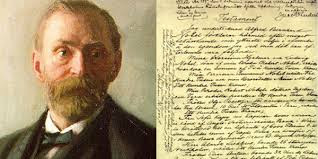
Nobel the Playwright Nobel had a lifelong appreciation for literature. He often wrote poetry, and also drafted a few novels. And shortly before his death, he completed a play, Nemesis, that was based on the story of a 16th century noblewoman who'd killed her abusive father. Nobel wrote that he thought his work was "rather good," and 100 copies of the play were made for distribution.
After Nobel died in 1896, family members tried to destroy those copies because they felt the play could undermine his reputation. Despite these efforts, three copies survived, and in 2005 Nemesis premiered at a theater in Stockholm.
However, though Nobel was a man of many talents, apparently his skills did not include writing drama — so don't feel bad if you missed the show. A Guardian article about the premiere stated: "According to the show's director, Rikard Turpin, Nemesis is a lurid parade of torture, rape and incest that features a drug-induced vision of the Virgin Mary, a conversation with Satan and ends in a 40-minute torture scene."

Nobel and Peace Throughout his life, Nobel didn't see his work with explosives as something he had to atone for. Most of his nitroglycerin products were put to use in fields like mining and communications (though ballistite was used in firearms). Of course there were military applications for all his explosives, but Nobel felt that "there is nothing in our world that cannot be misused."
In addition, Nobel believed that increases in destructive power might lead to peace. In 1890, he wrote, "On the day when two armies will be able to annihilate each other in one second, all civilized nations will recoil from war in horror and disband their forces." And Nobel, who was friends with peace activist Bertha von Suttner, told her, "Perhaps my factories will put an end to war sooner than your [peace] congresses."
However, Nobel's views did evolve to the point that he chose to establish the Nobel Peace Prize in order to honor those who "have done the most or the best work for fraternity between nations, for the abolition or reduction of standing armies, and for the holding and promotion of peace conferences" — a decision that many attribute at least in part to his ongoing discussions with von Suttner. In 1905, she won the Peace Prize herself.
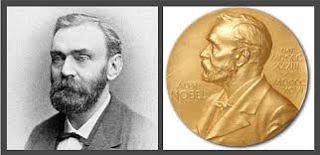
Feared Being Buried Alive In the 19th century, it wasn't uncommon for people to worry about being live burial (Edgar Allan Poe's "The Premature Burial" was published in 1844). In fact, Nobel's father was afraid of such a fate — at one point, he wanted to build a coffin that allowed its occupant to call for help, just in case.
It turns out that Nobel shared his father's fears of being entombed alive, and placed instructions in his will to prevent this: "It is my express will and injunction that my veins shall be opened after my death." Only after "competent doctors [had] noted definite signs of death" did Nobel want his body cremated.
A Confusing Will Given the importance of Nobel Prizes today, it's hard to imagine a world without them. Yet issues with Nobel's last testament mean that's almost what happened.
Nobel didn't like lawyers — he felt they made a living "by inducing people to believe that a straight line is crooked" — and he therefore wrote his will without any legal counsel. This helps explain why Nobel never checked to make sure that the groups he selected would be willing to do the work needed to award Nobel Prizes.
In addition, Nobel wanted the bulk of his fortune to establish a fund for these prizes, yet he didn't provide specifics about how that fund would be administered. Yet more issues arose because some family members were not happy to lose out on what would've been a large inheritance.
Obviously these problems were eventually resolved. However, it took time, which is why the first prizes were not awarded until 1901, five years after Nobel's death.

Clancy's comment: Mm ... Where there is a Will, there is a family.
I'm ....

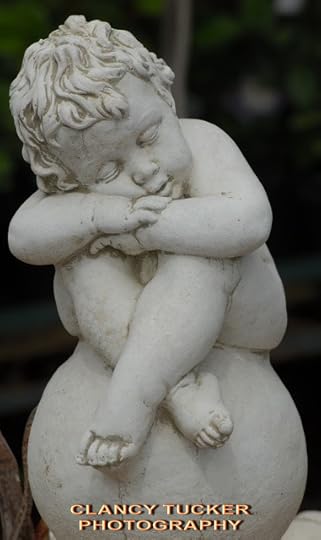
Published on February 28, 2016 16:32
28 February 2016 - SUBTLE HUMOUR

SUBTLE HUMOUR
G'day folks,
Time for a laugh. Some of these are very corny, but others are fairly sharp.




















Clancy's comment: Mm ... Some were okay.
I'm ...


Published on February 28, 2016 00:22
February 26, 2016
27 February 2016 - SPIDER WEBS

SPIDER WEBS
G'day folks,
I love watching and taking photographs of spider webs. They are a bit like lightning. You never know what you will get. Here is some background on how and why.
A Typical Spider Web
An orb-spinning spider puts its elegant traps together pretty quickly, proceeding easily from step to step according to the instruction manual pre-programmed into its brain.

Every web begins with a single thread, which forms the basis of the rest of the structure. To establish this bridge, the spider climbs to a suitable starting point (up a tree branch, for example) and releases a length of thread into the wind. With any luck, the free end of the thread will catch onto another branch. If the spider feels that the thread has caught onto something, it cinches up the silk and attaches the thread to the starting point.
It walks across the thread, releasing a looser thread below the first one. It attaches this thread on both ends and climbs to its center. The looser strand sags downward, forming a V-shape. The spider lowers itself from this point, to form a Y-shape. This forms the core support structure of the web.

The spider easily grips the thin threads with special serrated claws, a smooth hook and a series of barbed hairs on the end of its legs. As it walks along the initial structural threads, it lays more frame threads between various anchor points. Then it starts laying out radius threads from the center of the web to the frames. The spider does not coat the frame and radius threads with sticky material, since it needs to walk across them to get around the web.
After building all the radius threads, the spider lays more nonstick silk to form an auxiliary spiral, extending from the center of the web to the outer edge of the web. The spider then spirals in on the web, laying out sticky thread and using the auxiliary spiral as a reference. The spider eats up the auxiliary spiral as it lays out the sticky spiral, resulting in a web with non-sticky radius threads, for getting around, and a sticky spiral for catching bugs.

The spider sits in the middle of its web, monitoring the radius threads for vibrations. If an insect gets caught in any part of the web, the spider will feel the motion through the radius threads and make its way to the vibration source. In this way, the web extends the spider's sensory system over a much wider area. The spider might also leave the web, to retreat to a separate nest, while monitoring the web via a connected signal line.

Web-spinning spiders have an innate ability to tell the difference between vibrations from insect prey and vibrations from other sources (a leaf falling into the web, for example).
Many species can also distinguish the characteristic vibrations of dangerous insects, such as wasps, from their preferred prey.
When the orb web has deteriorated and is no longer useful, many spider species will destroy it, eating up all the threads so it can recycle the raw silk material. Spiders may leave the heavy bridge thread so that they can easily rebuild the web at a later point.
Not all spiders catch their prey by spinning a web.




Clancy's comment: Being a photographer has helped me to learn amazing things about nature, by viewing things much closer through the lense.
I'm ...

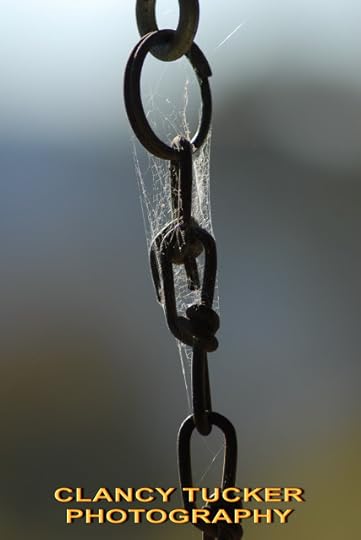
Published on February 26, 2016 18:59
February 25, 2016
26 February 2016 - ELEPHANTS THAT CAME TO DINNER

ELEPHANTS THATCAME TO DINNER
G'day folks,
I've included elephants in one of my books, having spent a lot of time with them over the years. Now, check out this great story, and watch the video.
Inviting big, exotic animals inside probably wasn’t the plan when the Mfuwe Lodge was built in Zambia in 1998, but that’s what wound up happening. The lodge surrounds a mango tree that a local group of elephants likes to feed on and sits on the path they traditionally used to get to it. When Mfuwe opened for business, the elephants made it clear they had no intention of changing their route. They walked in like they owned the place, shuffled through the lobby and out into the courtyard to feast on mangoes.

The spectacle—no doubt concerning to whoever was working the reception desk the first time it happened—has become one of the lodge’s main draws, and attracts crowds of tourists every year. According to the lodge, the group that makes the annual stroll through the lobby includes three generations of one elephant family, including their matriarch “Wonky Tusk” and the young “Lord Wellington,” who was born on the lodge grounds in 2009.

Wildlife cameraman Nathan Pilcher recently went to Mfuwe to see the elephants for himself, and you can watch his short movie below. Keep watching the video. You will see some other amazing stuff.
ELEPHANT VIDEO

Clancy's comment: Amazing video, eh? Love it.
I'm ...


Published on February 25, 2016 18:04
February 24, 2016
25 February 2016 - FACTS ABOUT JANE AUSTEN

FACTS ABOUT JANE AUSTEN
G'day folks,
Jane Austen was an English novelist whose works of romantic fiction, set among the landed gentry, earned her a place as one of the most widely read writers in English literature. This year marks the 240th anniversary of Jane Austen's birth. Iris Lutz and Claire Bellanti of the Jane Austen Society of North America review some interesting highlights of Austen's life, career, and literary impact.
1. Although she never married, Jane Austendid become engaged -- for one night.
She received and accepted a proposal of marriage on December 2, 1802, two weeks before her 27 birthday. According to family tradition, Jane Austen and her sister were visiting longtime friends Alethea and Catherine Bigg at Manydown Park when their friends’ brother, Harris Bigg-Wither, made the offer. Five-and-a-half years younger than Jane, Harris was, according to the author’s niece Caroline Austen, “very plain in person -- awkward, & even uncouth in manner . . . I conjecture that the advantages he could offer, & her gratitude for his love, & her long friendship with his family, induced my Aunt to decide that she would marry him . . . .”
Jane Austen changed her mind overnight, however, and refused the proposal the next morning. The awkwardness of the situation caused her to leave Manydown immediately. We can only speculate what Jane Austen’s thoughts were about the proposal. Perhaps she initially accepted because the marriage would have given her financial security and the means to assist her parents and sister. And, perhaps she changed her mind because she believed – as she later wrote to a niece considering a marriage of convenience – that “nothing can be compared to the misery of being bound without Love.”
Fortunately for her readers, she chose to remain single and was able to focus on writing rather than running a household and raising children.
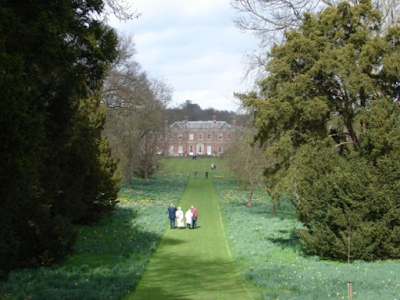
2. Jane Austen continued to imagine how the lives of her characters evolved long after she finished a novel. In A Memoir of Jane Austen, her nephew James Edward Austen-Leigh wrote, “She would, if asked, tell us many little particulars about the subsequent career of some of her people.” For example, Anne Steele, Lucy’s silly and vulgar sister in Sense and Sensibility, did not catch Dr. Davies after all. And, after the close of Pride and Prejudice, Kitty Bennet eventually married a clergyman near Pemberley, while Mary ended up with a clerk who worked for her Uncle Philips. Some of the most interesting revelations, however, related to Emma. Mr. Woodhouse not only survived Emma’s marriage to Mr. Knightly, but also kept his daughter and son-in-law living at Hartfield for two years. Deirdre Le Faye has also noted in Jane Austen: A Family Record that "According to a less well-known tradition, the delicate Jane Fairfax lived only another nine or ten years after her marriage to Frank Churchill."
3. The surnames of a number of Austen’s characters can be found within the prominent and wealthy Wentworth family of Yorkshire -- which also happens to intersect with Jane Austen’s own family tree.
Her mother, Cassandra Austen, née Leigh, was the great grandniece of the first Duke of Chandos (1673-1744) and Cassandra Willoughby. Her mother was also connected to Thomas, Second Baron Leigh of Stoneleigh (1652-1710), who was married twice: first to Eleanor Watson and then to Anne Wentworth, daughter of the first Earl of Strafford.
As the late Professor Donald Greene pointed out, “When the snobbish Sir Walter Elliot says of the hero of Persuasion, ‘Mr. Wentworth was nobody … quite unconnected, nothing to do with the Strafford family. One wonders how the names of many of our nobility become so common,’ it adds to the piquancy of the satire that Jane Austen’s family was in fact ‘connected’ with the real-life Strafford Wentworths.”
Austen also used names from the Wentworth genealogy tree while writing Pride and Prejudice. Her hero Mr. Darcy, the nephew of an earl, bears the names of two wealthy and powerful branches of the Wentworth family: Fitzwilliam (as in the Earls Fitzwilliam of Wentworth Woodhouse, in Yorkshire) and D’Arcy.
Professor Janine Barchas of the University of Texas at Austin and author of Matters of Fact in Jane Austen has also noted that Austen used yet another Wentworth family name in the novel Emma: “In the thirteenth century, a Robert Wentworth married a rich heiress by the name of Emma Wodehouse.”
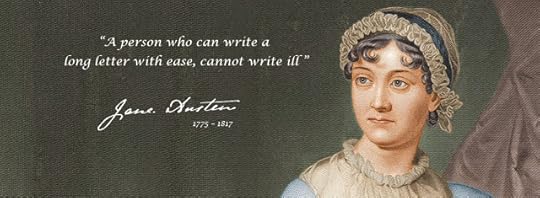
4. Jane Austen took her writing very seriously.
She began writing stories, plays and poetry when she was 12 years old. Most of her “Juvenilia,” as the material she wrote in her youth is called, was in the comic vein. She wrote a parody of textbook histories, The History of England… by a partial, prejudiced and ignorant historian, when she was 16 years old. She also wrote parodies of the romantic novels of “sensibility” that were popular in her day. Austen’s family members read aloud and performed plays for each other, and she learned about writing from these activities and the comments her family made about her own efforts. By the age of 23, Austen had written first drafts of the novels that later became Sense and Sensibility, Pride and Prejudice and Northanger Abbey.
From the letters she wrote to her sister, Cassandra, and other family members, one can see that Jane Austen was proud of her writing. She enjoyed discussing her latest work, sharing news about a novel’s progress at the printer, and offering advice on the craft of writing to other aspiring authors in the family. She also carefully tracked comments made by family members and friends about Mansfield Park and Emma and referred to Pride and Prejudice as her “own darling child.” Jane Austen continued writing throughout her adult life until just before she died in July of 1817.

5. Jane Austen’s life was not limited to a sheltered country existence.
On the surface, her life seems to have been quiet and secluded; she was born in a small country village and lived there for 25 years. Her nephew James Edward Austen-Leigh published A Memoir of Jane Austen in 1869, which reinforced the image that she was a demure, quiet maiden aunt in the best Victorian tradition. However, she led a very active life with travel and social contacts of many types. Through her family and friends she learned a great deal about the world around her.
Jane Austen frequently stayed with her brother Henry in London, where she regularly attended plays and art exhibits. Her brother Edward was adopted by wealthy cousins, eventually inheriting their estates in Kent (Godmersham) and Hampshire (Chawton) and taking their name (Knight). Over a period of 15 years, Austen visited Edward’s Godmersham estate for months at a time, mixing with his fashionable and wealthy friends and enjoying the privileged life of the landed gentry. These experiences are reflected in all of her fiction.
Jane Austen was also well aware of the horrors of the French Revolution and the effect of the Napoleonic Wars on the people and the economy of Britain. Her cousin’s husband was guillotined during the French Revolution, and her brothers Francis (Frank) and Charles were officers in the Royal Navy, serving on ships around the world during the conflict. Sir Francis William Austen (one year older than Jane) advanced through the ranks and was eventually knighted. He was promoted to Admiral of Fleet in 1860. Rear Admiral Charles John Austen (four years younger than Jane) had his own command and was serving in North America by 1810. From correspondence and frequent visits with these two brothers and their families she learned much about the Navy, which she incorporated into Mansfield Park and Persuasion.
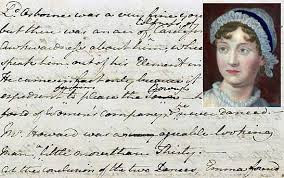
6. Men read Jane Austen, too.
Jane Austen’s novels are sometimes viewed as “chick-lit” romances, leading some men to think they wouldn’t enjoy reading them. But, Jane Austen has always had male admirers. Her books are not just about romance; they have a serious instructional purpose clothed in novel form. Her believable characters, realistic plots, moral themes, comedy, and dry wit appeal to both men and women.
British Prime Minister Harold Macmillan admitted to reading Austen’s novels, and Winston Churchillcredited her with helping him win World War II. Rudyard Kiplingread Jane Austen aloud to his wife and daughter each evening in an effort to raise their spirits after his son, fighting in WWI, was reported missing and believed dead. Even after the war,Kipling returned to Jane Austen with “The Janeites,” a short story about a group of British artillery soldiers in WWI who bonded through their shared appreciation of the novels of Jane Austen.
And one of her male contemporaries, Sir Walter Scott, praised her writing in his journal: “Also read again, and for the third time at least, Miss Austen’s very finely written novel of Pride and Prejudice. That young lady had a talent for describing the involvements and feelings and characters of ordinary life, which is to me the most wonderful I ever met with.”

Clancy's comment: I must say I really had to make myself read Pride and Prejudice whilst in school.
I'm ...

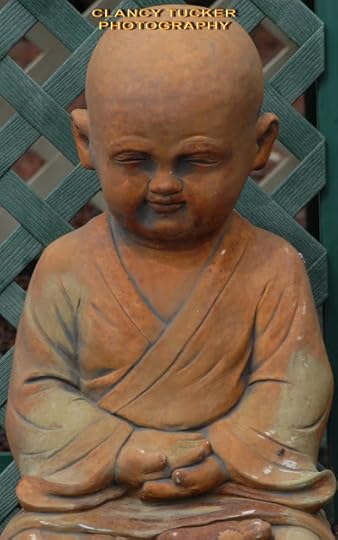
Published on February 24, 2016 17:31
February 23, 2016
24 February 2016 CAMBODIA

CAMBODIA
G'day folks,
Welcome to some insights into another of my favourite destinations, courtesy of Travelfish; one of the best travel sites going around. Cambodia is a Southeast Asian nation whose landscape spans low-lying plains, the Mekong Delta, mountains and Gulf of Thailand coastline. Its busy capital, Phnom Penh, is home to the art deco Central Market, glittering Royal Palace and the National Museum's historical and archaeological exhibits. In the country's northwest lie ruins of Angkor Wat, a massive stone temple complex built during the Khmer Empire.
For decades off limits to all but the most intrepid travellers, today Southeast Asia's Cambodia is a popular destination for all kinds of folks: from independent backpackers who roam far into the hinterland to luxury tourists who stay in style and see Cambodia's main drawcards between massages and exquisite French meals.

The ancient temple complex of Angkor Wat is Cambodia's national treasure. The nearby city of Siem Reap has developed dramatically since the days when Angelina Jolie filmed Tomb Raiderhere and fell in love with the nation.
While some lament the discovery of Angkor by the masses, the site is still breathtaking and Siem Reap offers all of the comforts one could wish for on any budget. Those with more than a day or two to spend in the Angkor area will find a host of more obscure ancient temples and monuments which can be fascinating in their own right.
Many do simply holiday at Angkor and travel no further, but Cambodia has a lot more to showcase. Consider as well a break on the lazy white-sand beaches of Sihanoukville, a stay at a stylish resort in resurging coastal Kep, or a tour to the atmospheric, mist-shrouded Bokor Hill Station for a taste of Cambodia's 1960s heyday. Meanwhile, several of Cambodia's islands have emerged as terrific alternatives to the more developed Thai islands.

Many write off Phnom Penh, yet it's a beautiful city, with a stunning colonial heritage, a gorgeous riverside promenade featuring a glittering palace, and a great selection of restaurants and bars.
Shopping here has taken off: trawl the stalls of the Russian market for "antique" finds, wispy organza fabrics and chic ceramics, stop in a few boutiques for home-grown designer clothes and get some leather shoes handcrafted at a bargain price at one of the city's skilled cobblers.
The reminders of the horrific genocide perpetrated by Cambodia's Khmer Rouge make for harrowing but essential viewing: do see Tuol Sleng and make a trip to the Killing Fields just outside the city for a sobering aside to your travels as you pause to remember the atrocities humans are capable of committing.

Further afield, Battambangoffers travellers a taste of laid-back rural life and an increasingly captivating art scene. Stop to see Cambodia's first winery and tour isolated Khmer temples, some of which pre-date Angkor.
The former Khmer Rouge stronghold of Anlong Veng is another key stop for the more adventurous traveller, where the grave of Pol Pot serves as another reminder of the history Cambodia is struggling to overcome.
Travelfish shows you how to make the most of the popular destinations, points you in the direction of Cambodia's best-kept secrets and equips you with the knowledge you need to make up-to-the-minute decisions throughout your trip to Cambodia.

What not to miss
Survey the World Heritage listed ruins of Angkor Wat. Take a sunset cruise off Phnom Penh. Visit the remnants of the Khmer Rouge regime. Eat fresh crab at coastal Kep. Trek through the jungle in remote Rattanakiri.

When to go
The most popular time to go is between November and February. There is little rain and it isn't too hot. The wet season runs from May to October and isn't the best time for a Cambodian beach holiday. The wet does keep the crowds at bay and Angkor is wonderful in the wet season, so it isn't all bad. April is scorchingly hot.

TRAVELFISH

Clancy's comment: Another gob smacking place to go. Like great food, top people and amazing sights? This should be on your list.
I'm ...


Published on February 23, 2016 22:59
February 22, 2016
23 February 2016 - WONDERFUL GIFS

WONDERFUL GIFS
G'day folks,
Time to view some more wonderful moving pictures.
















Clancy's comment: I love the birds in flight.
I'm ...


Published on February 22, 2016 17:33
February 21, 2016
22 February 2016 - GEORGE LUCAS AND 'STAR WARS'

GEORGE LUCAS AND 'STAR WARS'
G'day folks,
A long time ago in a galaxy not far away . . .before the empire struck back, and Jedis returned — there was a young padawan director named George Lucas who had a crazy idea for a space opera that almost never made it to the screen. George Walton Lucas, Jr. is an American filmmaker and entrepreneur. He is best known as the creator of the Star Wars and Indiana Jones franchises, as well as the founder of Lucasfilm and Industrial Light & Magic.
In 1973, George Lucas was living in a one-bedroom in Mill Valley when he directed a low-budget film called American Graffiti. Based on his childhood in Modesto, California as well as his love for cars, American Graffiti was a blockbuster. Although it cost less than $1 million to produce, it earned $50 million as well as five Oscar nods including Best Director.
Emboldened by his early success with Graffiti, Lucas was determined to follow through on an idea for a “space opera” he and his partner, Gary Kurtz, had been noodling around since 1971. The story was based on outer space adventures like Flash Gordon and Buck Rogers — stories Lucas adored as a young boy growing up on his family’s walnut farm.

There was no shortage of sci-fi in Hollywood at the time. But what American audiences got often involved dark, dystopian tales like Rollerball, Logan’s Run, or THX 1138(Lucas’ 1971 feature film debut). Lucas was determined to make a different kind of sci-fi movie — one that was fun and aimed at 14- and 15-year-olds.
“The reason I'm making Star Wars is that I want to give young people some sort of faraway exotic environment for their imaginations to run around in,” he said in an interview. “I have a strong feeling about interesting kids in space exploration. I want them to want it. I want them to get beyond the basic stupidities of the moment and think about colonizing Venus and Mars. And the only way it's going to happen is to have some dumb kid fantasize about it — to get his ray gun, jump in his ship and run off with this wooky into outer space. It's our only hope in a way."
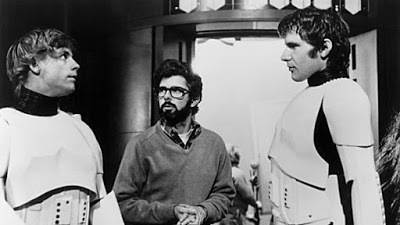
The Long Road to A New Hope
Lucas and Kurtz shopped around a 12-page treatment of Star Wars to various Hollywood studios. United Artists turned them down. So did Universal. However, 20th Century Fox, encouraged by the early buzz from Graffiti, decided to give the duo some money to flesh out the script.
But going from a rough outline to a final script would take years. In fact, early drafts of Star Wars would be unrecognizable to even die hard fans: Luke Skywalker is a grizzled old general, Han Solo is a frog-like alien, there’s a main character named Kane Starkiller, and the dark side of the force is called “the Bogan.”
Lucas struggled to reign in his space epic. The story was too dense, tonally imbalanced, and its elaborate scenes would be prohibitively expensive to shoot. His friend and mentor, Francis Ford Coppola, expressed misgivings about early drafts. Even Lucas’ partner Kurtz described the second draft as “gobbledygook.”
But with each round, the story improved. In the second draft, published in 1975, Luke Skywalker is a farm boy, not an older general and Darth Vader is the menacing man in black we’re familiar with today. The third draft introduced Obi-Wan Kenobi and played up the tension between Leia and Han Solo.

Acknowledging that he had trouble writing dialogue, Lucas brought in help from writers Willard Huyck and Gloria Katz (although the director rewrote most of their changes). For George, Star Wars was finally coming into focus. On January 1, 1976, he finished the fourth draft of the script, which eventually was used when production began in Tunisia on March 25, 1976.
Lucas and Kurtz originally budgeted $18 million for the film. Fox offered them $7.5 million. Eager to begin shooting, they took the offer and the rest was history.

Released in 1977, Star Wars ushered in a new era of movie-making with its special effects, fantastical world-building, and engrossing blend of myth and fairy tale. Although the final budget was $11 million, the film grossed over $513 million worldwide during its original release, setting the stage for a franchise that would span decades and create generations of fans across the world, connected by a common love for a galaxy far, far away.

Clancy's comment: Clever man, eh?
I'm ...


Published on February 21, 2016 16:58
February 20, 2016
21 February 2016 - FAMOUS INMATES IN ALCATRAZ
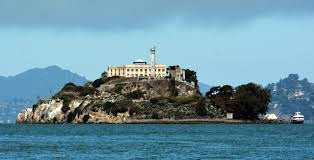
FAMOUS INMATES IN ALCATRAZ
G'day folks,
If you were to overhear someone talking about “The Rock” today, nine out of 10 people would think that the subject of conversation was action movie star and former wrestler Dwayne Johnson.But if you had overheard the same conversation 80 years earlier, when James Cagney was the toughest guy in movies and wrestlers had names like Gorgeous George, there would have been no doubt what the topic of conversation was. The only “Rock” back then was Alcatraz, the maximum-security prison perched on a small island in San Francisco Bay.
For almost 30 years, Alcatraz was the ultimate destination for the country’s most dangerous and wily criminals. Prisoners who were uncontrollable at other penal institutions were at last tamed by the severity of life at Alcatraz, while restless inmates who made a habit of breaking out of other prisons on the mainland found that their days of easy escapes were over. Almost 40 tried, but no one ever successfully escaped the citadel perched on the rock in the bay.
These days, Alcatraz exists solely as a tourist attraction, its odd location and famous history still a magnet for visitors to San Francisco. A key part of that history is the roll call of notorious criminals who were guests of the state there. In its day, Alcatraz hosted some of America’s most famous lawbreakers, and on the August anniversary of the arrival of the first group of them back in 1934, we take a quick look at a few of the most infamous.
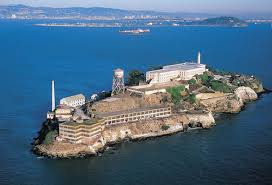
Inmate #85: Al “Scarface” Capone Conviction: Tax evasion Time Served at Alcatraz: 5 years (1934–1939) Post-Term: mental illness, death from syphilis
By the time Alphonse Gabriel Capone arrived at Alcatraz on the morning of August 22, 1934, he was past his peak as a crime kingpin. He had been sentenced to an 11-year term in 1931 after several lengthy court cases that focused more on his errant declaration of income than on his reputation as a killer and bootlegger. Found guilty of tax evasion, Capone headed to an Atlanta prison, where favoritism showed to him by fellow inmates and staff resulted in a transfer to Alcatraz a mere 10 days after the prison opened. At Atlanta Federal Prison, Capone had what might be called “the run of the place”: furnishings in his cell, frequent visitors, and easily bribed guards. At Alcatraz, the warden and guards were immune to his cash and influence, and Capone had to toe the line or face solitary confinement.
By the time of his arrival at Alcatraz, Capone was in a bad way. He was suffering withdrawal from cocaine addiction, and untreated venereal disease contracted many years earlier when he worked as a bouncer at a brothel in Chicago had begun to impair his body and mind. His last year at Alcatraz was spent in the prison hospital. The Capone who left Alcatraz in 1939 was a sickly, incoherent man who would live out his final 8 years in seclusion at his Florida mansion.
Inmate #110: Roy GardnerConviction: Armed robberyTime Served at Alcatraz: 2 years (1934–1936)Post-Term: author, suicide
Alcatraz was repurposed by the federal government from a military prison to a general federal prison in 1933 expressly to deal with criminals like Roy G. Gardner, the man who was nicknamed “King of the Escape Artists.” Gardner seemed to be an outlaw from an earlier time. Mobs and business-like organizations weren’t for him; he worked alone as a bandit and stick-up man, frequently and successfully robbing trains. His big mistake was to rob U.S. mail trains and trucks, which soon made him the most wanted man in America.
Caught and sentenced to 25 years in prison at McNeil Island Federal Penitentiary, Washington in 1921, Gardner made a daring escape from a moving train. He was caught a year later, but escaped again. Finally conveyed to prison on the third try, Gardner escaped McNeil Island after cutting a hole in a fence and swimming to shore. Capture a couple of months later, he subsequently did time at several of the toughest prisons in America, including Atlanta Federal Prison, where he befriended Al Capone.
While incarcerated, Gardner made several attempted breakouts, none of which were successful, but all of which gave prison officials headaches. Alcatraz was an inevitable destination for an escapee of his tenacity. Surprisingly, however, given his reputation, Gardner was granted clemency in 1936 and released. Shortly thereafter, he published a book he wrote in prison called Hellcatraz: The Rock of Despair, a first-hand account of what Gardner called “The Tomb of the Living Dead.” Life outside of Alcatraz wasn’t much happier for Gardner, though – he committed suicide by breathing cyanide in 1940.

Inmate #117: George “Machine Gun” KellyConviction: KidnappingTime Served at Alcatraz: 17 years (1934–1951)Post-Term: death by heart attack in jail
It couldn’t be said that many of the criminals who ended up in Alcatraz were from good families, but George Kelly Barnes, Jr. was raised in a well-off Memphis household and even attended some college. A sudden marriage led him to drop out of school, and he got involved in bootlegging during Prohibition. Kelly didn’t really hit the big time, though, until he met and married a more experienced criminal named Kathryn Thorne. Thorne groomed her new husband for success, buying him a Thompson machine gun and encouraging him to learn how to use it. Soon, the two robbed banks Bonnie and Clyde-style throughout the South and word of “Machine Gun Kelly” spread.
The couple misstepped when they kidnapped an Oklahoma oil tycoon named Charles Urschel. They successfully obtained a $200,000 ransom and began to live large, but the Bureau of Investigation (soon to become the F.B.I.) was on the case. In two months’ time, the Barneses were caught, convicted, and sentenced to life. When Kelly bragged that the tough Leavenworth Prison couldn’t hold him, alarmed officials immediately shipped him to Alcatraz. He arrived not long after Al Capone and Roy Gardner.
Unlike Gardner, who was anything but a model inmate, “Machine Gun” Kelly served his time at Alcatraz quietly. He was so well-behaved that other inmates began to refer to him as “Pop” for “pop gun.” He worked in the office, served as an altar boy, and reportedly regretted his life of crime. When he left Alcatraz in 1951, however, it wasn’t to go free; he was transferred back to Leavenworth, where he died in 1954.

Inmate #325: Alvin “Creepy” KarpisConviction: KidnappingTime Served at Alcatraz: 26 years (1936–1962)Post-Term: author, pill overdose
Like "Machine Gun" Kelly, Albin Francis Karpowicz saw kidnapping as an easier way to make large sums of money than bank robbing. Known as “Creepy” by fellow gang members for his unsettling grin, the native Canadian became the brains behind the Barker family, a bank-robbing gang known for their viciousness during the early 1930s. In a relatively short time, Karpis became one of an elite group of “public enemies” that also included John Dillinger and “Pretty Boy” Floyd.
Karpis and “Ma” Barker’s boys worked with assorted accomplices to kidnap millionaire William Hamm for $100,000 in 1933. This job was so successful that they did it again, kidnapping a banker named Edward Bremer for $200,000. Bremer had friends in high places, however, and J. Edgar Hoover of the F.B.I. made it his personal business to track down the offenders. The Barkers were killed, but Karpis escaped from the police more than once; he wasn’t arrested until 1936, when J. Edgar Hoover personally took Karpis into custody after agents barricaded his Plymouth Coupe in the street.
Karpis had the ignoble honor of being the longest serving inmate at Alcatraz, where he was sent on a life sentence, even outlasting the prison itself, which closed in 1963. Karpis finished his time elsewhere and was deported to Canada upon release in 1969. He wrote two books about his life of crime before dying of an accidental overdose of sleeping pills in 1979 at the age of 72.

Inmate #594: Robert StroudConviction: MurderTime Served at Alcatraz: 17 years (1942–1959)Post-Term: death by natural causes in jail
Possibly the most famous inmate in the history of Alcatraz is Robert Stroud, the so-called Birdman of Alcatraz. This is due to a very successful 1962 movie (loosely) based on his life starring Burt Lancaster. The title of the film has given rise to the common misconception that Stroud raised birds at Alcatraz prison. Alcatraz did not allow animals of any kind inside its walls; Stroud conducted his experiments with canaries at Leavenworth before his time at The Rock.
Initially sent up to McNeil Island for stabbing a bartender at age 21, Stroud was an unruly and dangerous inmate. He attacked fellow prisoners and did his utmost to sow dissension in the prison. Transferred to Leavenworth, he stabbed a guard to death and his sentence was upgraded to life. To keep him away from fellow inmates, prison officials isolated Stroud and allowed him to pursue his interest in bird breeding and care to keep him occupied. Stroud wrote two well-regarded books on the topic and started a business selling treatments for bird diseases.

Clancy's comment: Mm ... Interesting that most of them had a nickname. Then again, who doesn't?
I'm ...


Published on February 20, 2016 20:19
February 19, 2016
20 February 2016 - WISE, WISER, WISEST

WISE, WISER, WISEST
G'day folks,
Yep, it's that time again. Check out these quips.
















Clancy's comment: I loved the third one from the top.
I'm ...


Published on February 19, 2016 21:11



